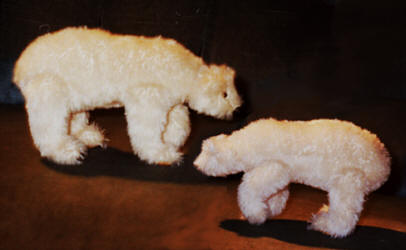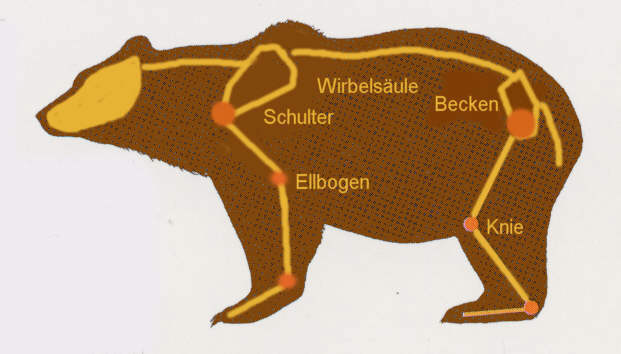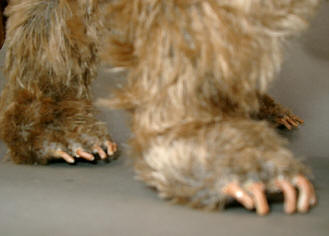Example page - in my CD blue words are a link to other pages
Example page - in my CD blue words are a link to other pages
Realistic proportions
 |
I
have noticed many novices in realistic bear design make the legs very short or
attach them too low.
|
|
|
|
As you see on the skeleton the bear has hips close to his spine (like most other mammals). The legs don't start under the tummy, but much higher. |
 |
Needle sculpted toes and claws will also contribute to the realistic look. It helps, keeping the toes flat.
The right soles wonít be any trouble, I hope. Keep in mind to make the edge of the foot rounded, so the sole can be large and flat.